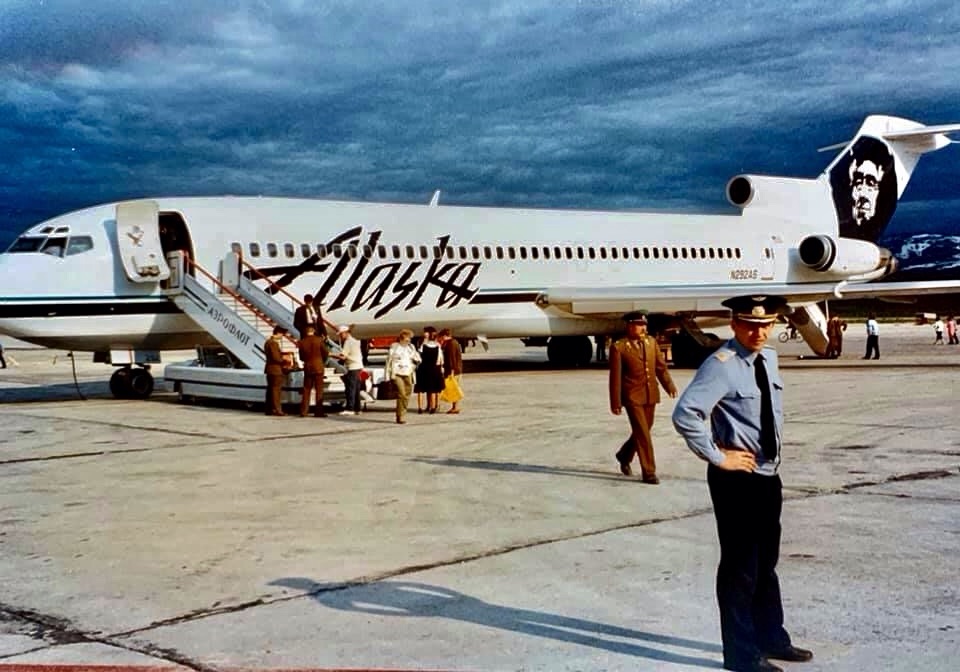From the 1950s onward to the 1980s, the longest legs required technical stops for refueling and crew rest. This made northern cities on the great circle routes, key for airlines.
Outside the trans Polar region, way stations like Shannon, Ireland, Gander and Goose Bay, Newfoundland, Bermuda and the Azores in the Atlantic, Honolulu, Fiji and Guam in the Pacific, Cold Bay and Shemya in the Aleutian Islands in Alaska and the remote Cocos Islands in the Indian Ocean, also served as technical stops, as they were often identified.
Anchorage in Alaska, was one such key geographical transit point.
Hence, the moniker “Air crossroads of the world” as a way point between Europe and Japan and the eastern cities of north America and Asia. Add the Cold War restrictions of overflying the Soviet Union and ANC was a “must have” way station for Japan Airlines, Air France, British Overseas Airlines Corporation, Scandinavian Airlines System, Lufthansa German Airlines, KLM Royal Dutch Airlines, Sabena Belgian World Airlines, Swissair, Iberia and Alitalia, Korean Airlines and China Airlines (Taiwan) and Pan American World Airways.
As a non revenue traveler in the 1970s, based in Alaska, I often was a privileged guest of many of these airlines in my desire to experience their products and their home countries. (My first international trip was with KLM Royal Dutch Airlines from Anchorage to Amsterdam in 1969, onboard aircraft Gerard Mercator, a DC-8.(As a lover of maps, I was further inspired by KLMs meaningful practice of aircraft naming protocol).
Anchorage was so well connected I followed up that first journey by being a guest of Lufthansa to Frankfurt (Boeing 707 Intercontinental) and SAS to Copenhagen and Bergen (DC-8 and DC-8-63). Great journeys and priceless memories, making cherished friends along the way.
History repeats itself today as many of the airlines overfly Alaska enroute to Asia, because of sanctions against Russia. Technology means the current long range airliners need not stop and crew rest are onboard.





